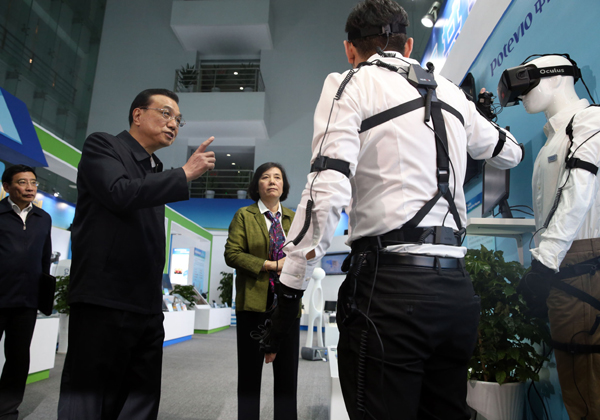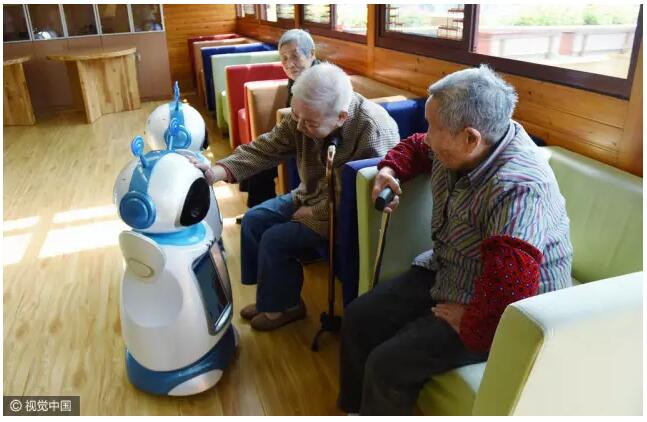Information consumption

Frequent updates: China will speed up the development of 5G in both technology testing and industrial application, with the goal of entering the commercial market in 2020.
Wider coverage: By 2020, 98 percent of administrative villages and 80 percent of information service stations will be covered with optical fiber, allowing villagers to embrace the information age with internet connection. The project will be carried out by provinces.
More diversity: Despite disparities in income, age, region and ethnicity, all people should enjoy the benefits brought by the latest sci-tech products. China issued support policies for enterprises to promote low-priced information devices such as smart phones, digital TVs for low-income groups, mobile apps and intelligent terminals for remote regions and rural areas, while advancing the development of language translation software for ethnic groups.
48-hour delivery service

By 2020, enterprises that specialize in delivery services will be able to complete cross-megacities delivery order within 48 hours.
With the coverage rate of internet connection in villages and towns rising to 90 percent from 70 percent in 2015, rural residents, even in remote regions, will be able to enjoy delivery services in 2020.
By 2020, it is projected that China will have three to four delivery enterprises and conglomerates with annual business orders surpassing 10 billion or revenue over 100 billion yuan, and build more than two renowned brands with international competitiveness and credibility.
One-hour commuting route
By 2020, main lines of railways, also known as the one-hour commuting route, connecting megacities in developed regions will be established. For the remaining qualified cities in urban regions, construction plans for commuting railways will also be initiated.
Use of ethanol in gasoline for cars nationwide by 2020
China has for the first time set a targeted timeline to roll out the use of ethanol in gasoline nationwide for cars by 2020.
Ethanol in gasoline will help to reduce the emission of carbon in carbon exhaust, fine particular matter such as PM2.5 and other pollutant matters, to improve the air quality in China.
More information on healthcare
By 2020, three medical databases - individual information of patients, digital health files and electronic medical reports - will cover all people, and they will update according to the latest data.
Details:>> China to further promote information consumption
See local doctors

China will explore setting up an integrated medical consortium that runs through the county, town and village levels, and by 2020, the consultation rate in hospitals at county level would be increased to around 90 percent.
By 2020, every county should have at least one county-level public hospital, every town should set up one standardized town-level public health center, every administrative village should have one clinic, and every sub-district administrative office, or every 30,000 to 100,000 residents, is set to enjoy one community health center.
In poor areas, every town-level public health center should have at least two physicians, every clinic in villages should have at least one doctor with expertise in more than five aspects in traditional Chinese medicine (TCM), and that can provide villagers with inexpensive and effective TCM services.
Details:>>China to establish modern hospital management system
Widespread reading
By 2020, the construction area of public libraries per 10,000 people will reach 110 square meters, seats in public reading rooms reach 1.05 million, the average person will have one book in store, and average funds for purchasing books in public libraries will reach 1.8 yuan per person, and 80 percent of public libraries will meet the standards.
More fresh air

By 2020, the ratio of days with good air quality in cities above the prefecture level will exceed 80 percent, and the density of fine particulate matter (PM2.5) in cities that have not yet met the required standards will drop by 18 percent.
By 2020, the country’s forest coverage will be raised to 23 percent of its land; wetland inventory will be stabilized at 800 million mu (over 53 million hectares), and nature reserves will remain steady at 17 percent of the country’s total land area. In addition, the number of national “forest cities” will increase to 200, and the ratio of green land will reach 25 percent in over 80 percent of administrative villages nationwide.
Higher standards for sewage disposal
By the end of 2020, sewage disposal equipment should cover all cities and towns in China, and the sewage treatment rate in cities should reach 95 percent. All sewage should be collected and treated in prefecture-level cities and regions.
Sewage disposal in rural areas should be promoted, and toilet sewage disposal should be put first. By 2020, toilet sewage treatment rate should reach at least 70 percent.
Less energy consumption
By 2020, total energy consumption should be controlled within 5 billion tons of standard coal. Coal consumption should be further reduced; the major energy source should be clean energy, and major progress should be made in energy structure adjustment. Non-fossil energy should account for 15 percent.
By 2020, 6,000 non-coal mines should be eliminated or closed.
100 intelligent sanatoria bases
By 2020, an intelligent healthcare sanatoria industry covering the whole life cycle should be established; over 100 demonstration bases should be set up; over 100 leading enterprises in the field should be raised, and a number of brands in this field should be created. Meanwhile, wearable health management equipment should be developed.
University after retirement

By 2020, there should be at least one university for senior citizens in every city above county level; schools for elderly people should cover 50 percent of towns and neighborhoods, and specific learning areas for the aged should cover 30 percent of administrative villages and residents’ committees. Efforts should be made to make distance education for elderly people accessible in half of the counties, cities and districts nationwide.
Details:>>State Council issues development plan for elderly education
